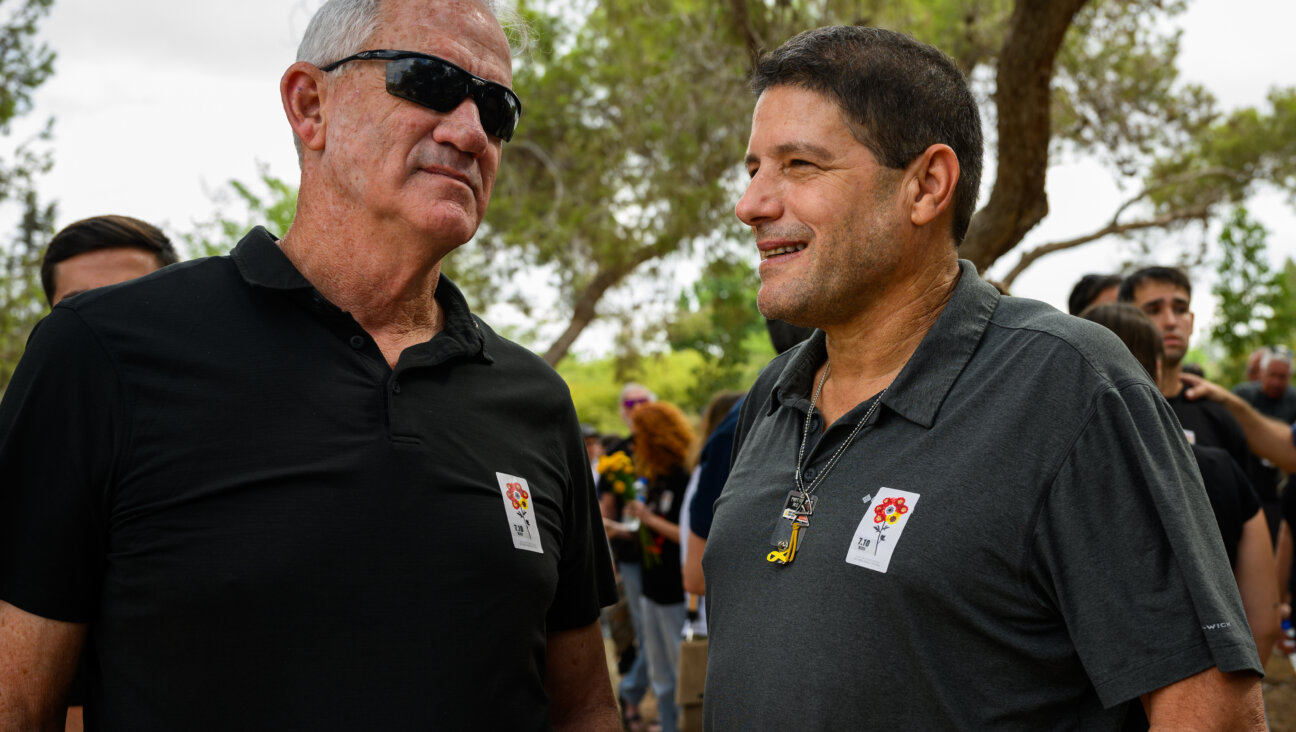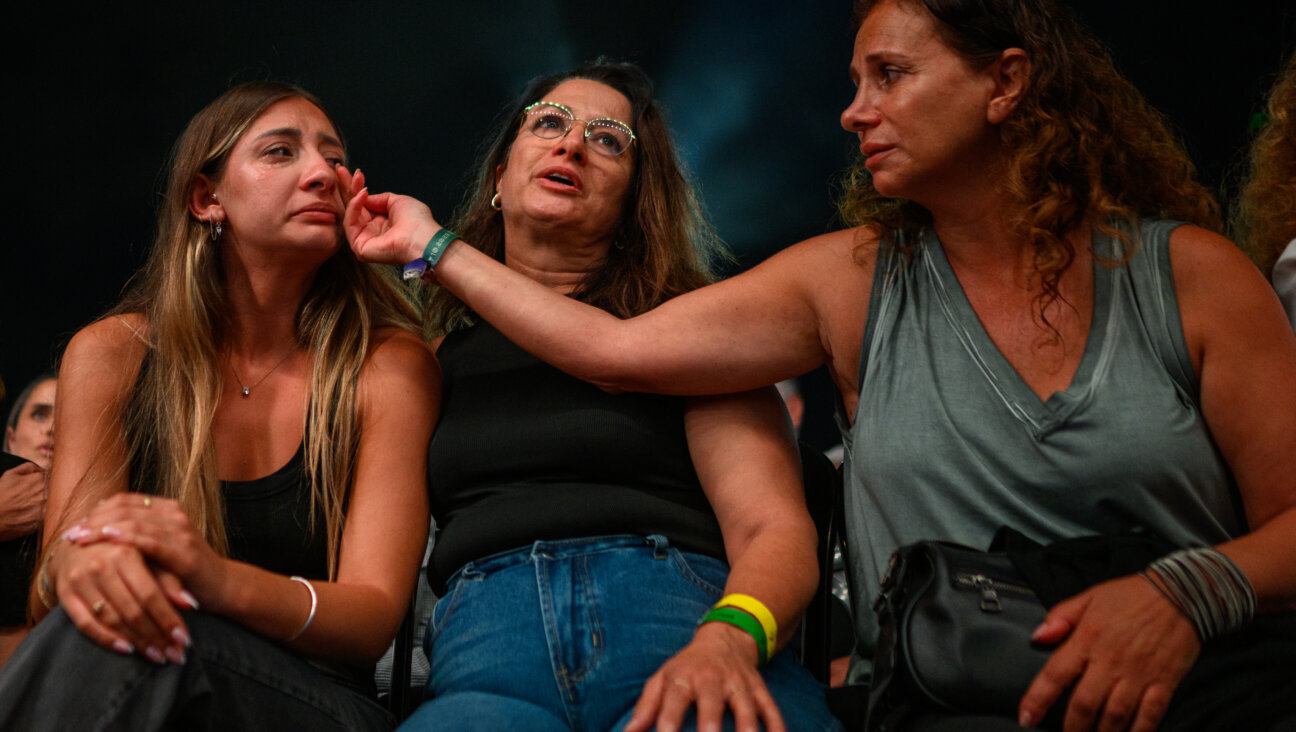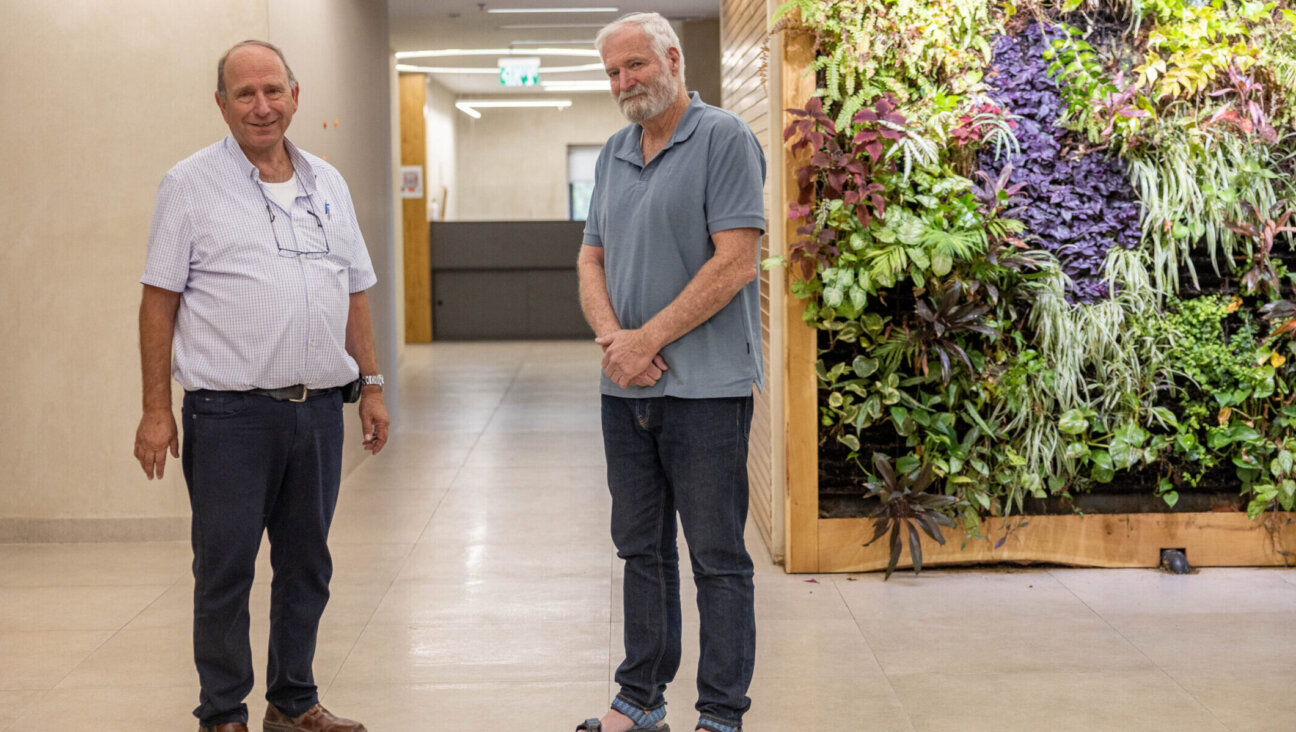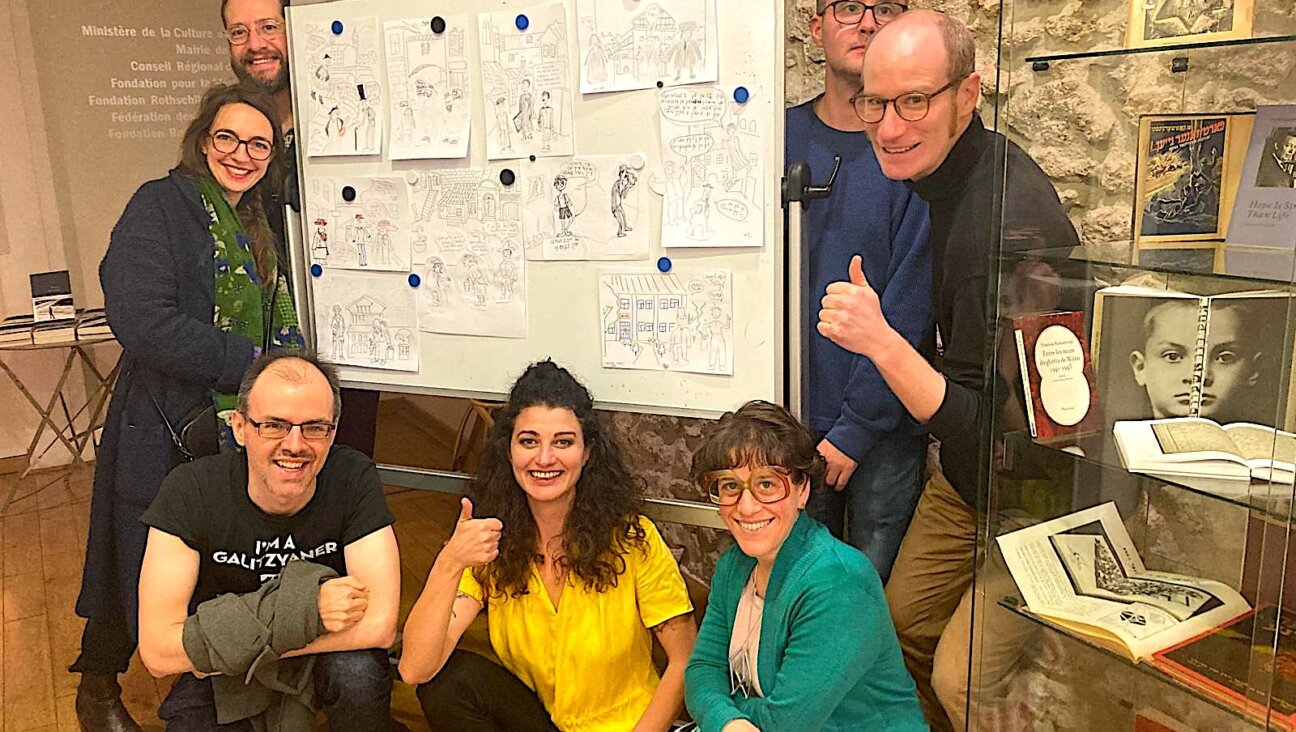September 23, 2005
Engaging Intermarrieds Is Not a Zero-sum Game
Opinion writers Jack Wertheimer and Steve Bayme mount a strong attack on the proponents of outreach to the intermarried and the programs they sponsor (“Real Realism on Intermarriage,” September 9). In effect, their position is that the only way to be sure that the children of an intermarriage are raised as Jews is conversion of the non-Jewish spouse.
In fact, what evidence there is on the subject suggests that the truth is otherwise. I was research director for Boston’s Jewish community demographic studies in 1985 and 1995. By the time of the second study, the Combined Jewish Philanthropies of Greater Boston had a focused concern about Jewish continuity, so we included a number of questions to enable us to begin to look at these issues. The sample included Jews married to born Jews, to Jews-by-choice and to non-Jews. We asked questions about a variety of traditional rituals, about Jewish friends, about commitment to Israel, about synagogue membership and other markers of Jewish attachment and commitment.
Not surprisingly, the results indicated that conversion of an originally non-Jewish spouse was highly correlated with high levels of Jewish practice and the likelihood of creating a Jewish household. But we found, unexpectedly, that there was also another route: membership in a synagogue.
For example, the data showed that intermarried Jews who belonged to synagogues lit Hanukkah candles, observed the Sabbath and donated to Federation at nearly the same rates as those married to Jews-by-choice, and at higher rates than in-married Jews who did not belong to a synagogue.
Even more to the point of Wertheimer and Bayme’s opinion article, belonging to a synagogue was significantly related to bringing up children with an unambiguous Jewish identity, for Jews married to Jews-by-choice and those married to non-converts. The effects of synagogue membership were additive to, but independent of, conversion.
There is no doubt that conversion increases the odds that children will be raised Jewish. Conversionary couples join synagogues and engage in most Jewish behaviors at significantly higher rates than the intermarried. But if we set conversion as the only or even the best target for all intermarried couples, the obvious — even if unarticulated — implication is that any non-Jewish spouse who does not choose to convert is somehow second-rate, and probably can’t be trusted to be a supportive partner in raising Jewish children; or, perhaps, that a Jewish partner who does not insist on the conversion cannot be fully committed to having a Jewish home.
Both of these messages, besides being inaccurate, are, to put it gently, off-putting. And instituting policies of outreach and keruv does not mean lowering the standards of welcoming institutions.
Welcoming intermarrieds who want to be part of our synagogues, Jewish community centers, schools and other institutions does not mean turning our backs on endogamous Jews or possible Jews by choice. Wertheimer and Bayme imply that any programs that offer approaches other than promoting endogamy and conversion to Judaism will of necessity dilute Jewish life and divert resources from such programs. They are wrong. There are resources enough for multiple approaches.
It can’t be said enough: This is not a zero-sum game. The either-or posture that Bayme and Wertheimer assert does a disservice to their considerable capacities for the analysis of American Jewish life. It does an even greater disservice to the intermarrieds whom they do not want Conservative synagogues and others to include, to their children and to the future of these institutions and our entire community.
Sherry Israel
Visiting Associate Professor
Hornstein Program in Jewish
Communal Service
Brandeis University
Waltham, Mass.
Jack Wertheimer and Steven Bayme bemoan intermarriage after looking at statistics comparing the more Jewish attitudes and behaviors of in-married families to those of intermarried families taken “as an undifferentiated whole.” What’s more important is to compare in-married families and those intermarried families who are raising their children as Jews.
The 2004 San Francisco Jewish Community Study found that the group that had the highest percentage of children receiving formal Jewish education was not in-married parents (75%), but interfaith parents raising their children as Jews (85%), reflecting what investigator Bruce Phillips describes as “the Jewish educational commitments of interfaith parents raising their children in Judaism.”
A December 2004 paper by the Cohen Center’s Benjamin Phillips and Fern Chertok emphasizes the impact of the environment in which children are raised and concludes that “tarring all intermarriages with the same brush will make the event horizon [the inevitability of intermarriage resulting in assimilation] a self-fulfilling prophecy.”
As Wertheimer and Bayme acknowledge, what’s essential to Jewish continuity is to have more “parenting dedicated to raising children exclusively within the Jewish faith.” The July 8 Forward editorial they criticize aptly notes that “Judaism will continue to thrive only if individuals are encouraged to embrace it and made to feel welcome when they do.” That is precisely where Wertheimer and Bayme’s five-point program fails. They admit that their propositions “give offense to individuals.” People do not go where they are offended. The overwhelming negativity about intermarriage that pervades their approach serves only to turn people away.
Phillips recognizes the positive impact of genuinely welcoming intermarried parents when he attributes the fact that more interfaith families in the Bay Area than nationally are raising their children as Jews to “vigorous outreach efforts supported by the [Bay Area] community.” The Federation of Jewish Men’s Clubs and the authors of “A Place in the Tent” also recognize this when they encourage the Conservative movement to include non-Jewish parents in children’s rituals of passage.
Fortunately, many signs indicate a shifting tide in communal leaders’ attitudes toward intermarriage and outreach. In addition to the Boston federation’s leadership in funding outreach programs, the San Francisco federation recently appointed an advisory committee to advise on expanding its ongoing funding, the Washington, D.C., federation has begun funding outreach programming and the Cleveland federation has started a process toward that goal. Several major family foundations are also evaluating outreach as a potential funding priority.
This shift in attitudes, and the programming that will result, can have the same effect nationally as it had in San Francisco.
Edmund Case
President
InterfaithFamily.com
Newton, Mass.
Montessori Lesson Lost
The August 26 article on the growth of Jewish Montessori schools was an eloquent and balanced report (“Montessori Movement Offers Jewish Educators an Alternative”). Yet it missed one aspect of Montessori education that I fear may not be the focus of many of the newly founded Jewish Montessori Schools.
Maria Montessori was an advocate for, and true believer in, world peace. It was her belief that if we raise and educate children from diverse backgrounds together — exposing them to the understanding that we all share the same fundamental needs, while at the same time celebrating their diversity — each child would in turn become a purveyor of world peace. Her belief and her practice was that each child deserved to develop his or her human potential to the utmost degree and by doing so be able to awaken in himself or herself the consciousness necessary to forestall war.
It is necessary, in order to fulfill this mission inherent in Montessori education, to study and include all cultures. It is essential to Jewish belief that we take responsibility for the world. Through securing the identity with which each child was born, and then connecting the child’s consciousness to the world, he or she becomes able to be an equal and responsible party in it.
Montessori education is not simply an alternative method of education that is just now being discovered by Jewish educators. It is a way of viewing the child and the world, a way that is in harmony with deep Jewish principles and one that offers a workable path to tikkun olam — if embraced for that purpose.
D’vorah Horn-Greenberg
Founding Head of School
Bayt Yeladeem: Children’s House
Philadelphia, Pa.
Firefighting Rabbis
We were pleased to learn that the Rockville Volunteer Fire Department voted to accept Rabbi Chesky Tenenbaum as its chaplain (“Fire Department Gets Jewish Chaplain,” August 26). While we are sure there are other Jewish chaplains of fire departments around the country, we would like to point out that the Bennington Fire Department, in Bennington, Vt., has had a rabbi serving as its chaplain for four years.
To the best of anyone’s recollection, Rabbi Howard Cohen, a graduate of the Reconstructionist Rabbinical College, is the first rabbi to serve as chaplain to a fire department in Vermont. Since Cohen is also a Level 1 certified firefighter, in addition to his chaplain duties he is also expected to perform all necessary duties at fire scenes.
Jeff Gauthier
Chief
Brian Billert
Deputy Assistant Chief
Tyler Holister
Assistant Chief
Town of Bennington Fire Department
Bennington, Vt.
A message from our CEO & publisher Rachel Fishman Feddersen

I hope you appreciated this article. Before you go, I’d like to ask you to please support the Forward’s award-winning, nonprofit journalism during this critical time.
We’ve set a goal to raise $260,000 by December 31. That’s an ambitious goal, but one that will give us the resources we need to invest in the high quality news, opinion, analysis and cultural coverage that isn’t available anywhere else.
If you feel inspired to make an impact, now is the time to give something back. Join us as a member at your most generous level.
— Rachel Fishman Feddersen, Publisher and CEO























